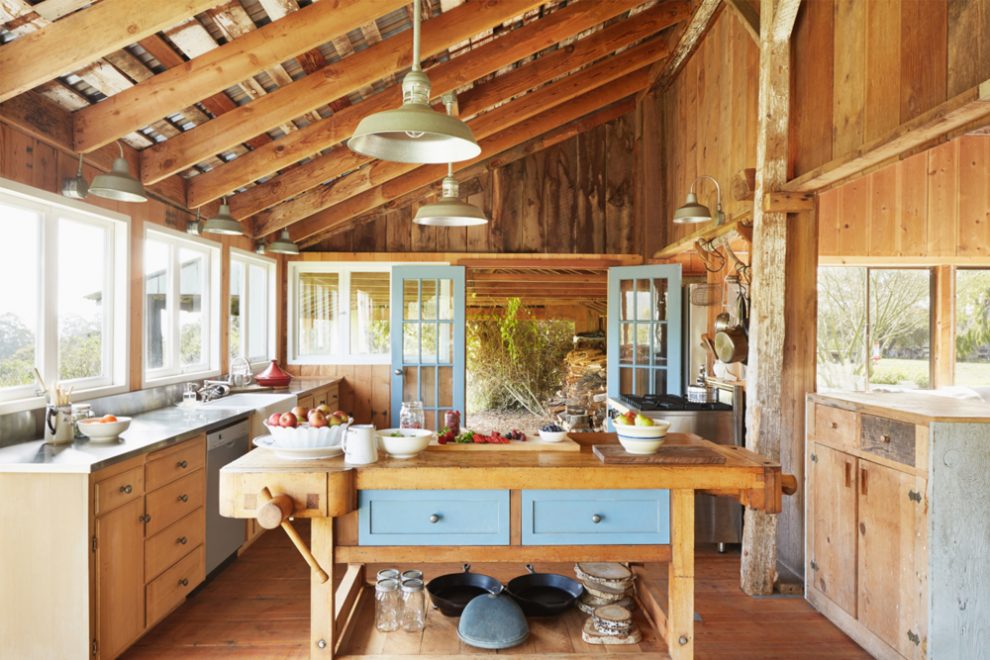In an age of sleek and modern design, there’s something uniquely captivating about the timeless charm of farmhouse home styles. These homes harken back to a simpler time when life was centered around family, nature, and the joys of rural living. Embracing a farmhouse style doesn’t just mean decorating with reclaimed wood and vintage decor; it’s about cultivating a sense of warmth, comfort, and connection to the past. Let’s take a journey through the essence of farmhouse home styles and what makes them so enduringly beautiful.
1. The Heart of Farmhouse Design
Farmhouse design is characterized by its connection to the countryside, celebrating the rustic beauty of rural life. Key elements of farmhouse home styles include:
Weathered Wood: Farmhouse interiors often feature reclaimed wood in various forms—be it in exposed beams, shiplap walls, or farmhouse tables. The weathered and worn look of wood adds authenticity and warmth to the decor.
Neutral Color Palette: Farmhouse color schemes lean toward neutral tones, including whites, creams, beiges, and soft grays. These colors create a soothing and welcoming atmosphere, allowing other elements to shine.
Vintage Touches: Vintage and antique decor pieces play a significant role in farmhouse interiors. These items, whether they’re heirlooms, flea market finds, or hand-me-downs, add character and a sense of history to the space.
Functional Farmhouse Sinks: A staple of farmhouse design, large apron-front sinks are not only practical but also contribute to the aesthetic. They evoke the feel of a country kitchen and provide ample space for cooking and cleaning.
Open Shelving: Open shelving in the kitchen is a common feature, allowing homeowners to display their favorite dishes, glassware, and collectibles. It adds a personal and decorative touch to the room.
2. Cozy and Inviting Spaces
Farmhouse interiors are designed with comfort and practicality in mind. Furniture tends to be comfortable and inviting, encouraging relaxation and gatherings. Farmhouse sofas and armchairs often feature plush cushions and soft, durable fabrics like linen or cotton.
3. Farmhouse Dining
The dining area is a central space in farmhouse design. Farmhouse dining tables are typically large and robust, often made of solid wood. They serve as a focal point for family meals and gatherings, where conversations flow as freely as the food.
4. Farmhouse Chic
While traditional farmhouse design emphasizes simplicity and functionality, modern interpretations embrace a more polished look known as “farmhouse chic.” This style combines the rustic charm of farmhouse design with contemporary elements, creating a space that feels both cozy and refined.
5. Bringing the Outdoors In
Farmhouse design often blurs the line between indoor and outdoor living. Large windows and glass doors allow natural light to flood the space and provide views of the surrounding landscape. This connection to nature enhances the sense of tranquility that farmhouse interiors offer.
6. The Front Porch
Farmhouse homes typically feature welcoming front porches, complete with rocking chairs and a sense of nostalgia. These spaces are perfect for sipping iced tea on a warm summer’s day and watching the world go by.
7. Farmhouse Bedrooms
Farmhouse bedrooms are retreats designed for rest and relaxation. They often incorporate cozy quilts, vintage-style bed frames, and soft lighting to create a peaceful ambiance.
In a world that sometimes feels fast-paced and disconnected, farmhouse home styles offer a return to simpler values and a connection to nature and heritage. Whether you’re living in the countryside or the heart of the city, farmhouse design can infuse your home with a sense of warmth, authenticity, and comfort. It’s a style that celebrates the beauty of imperfection and the enduring appeal of a life well lived. In farmhouse home styles, you’ll find not just a design choice but a way of life—a rustic retreat that welcomes you with open arms.


Add Comment